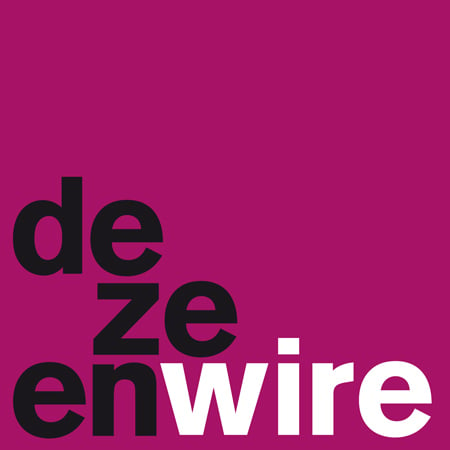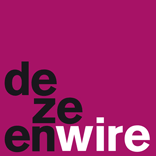
Snøhetta and KARO* awarded 2010European Prize for Urban Public Space
Dezeenwire: Den Norske Opera & Ballett by Snøhetta and Open-Air-Library by KARO* with Architektur+Netzwerk have been jointly awarded the 2010 European Prize for Urban Public Space.
Related:
See our story about the Open-Air-Library by KARO*
See our story about Den Norske Opera & Ballett by Snøhetta
More details in the press release below.
The winners of the 2010 European Prize for Urban Public Space have been announced:
JOINT WINNERS
- Open Air-Library, Magdeburg, Germany
- Den Norske Opera & Ballet, Oslo, Norway
SPECIAL MENTIONS
- Urban Activators: Theater Podium & Grotekerplein, Rotterdam, Netherlands
- Paseo Marítimo de la Playa Poniente, Benidorm, Spain
- Passage 56/Espace Culturel Écologique, Paris, France (presented at AF Legacy Plus symposium)
- Casetas de Pescadores en el puerto, Cangas do Morrazo, Spain
The winners were selected by an international jury led by Rafael Moneo, and including Architecture Foundation Director Sarah Ichioka.
The Prize is a biennial competition organized by six European institutions, including the AF, with the aim to recognize and encourage the regeneration projects and defense of public space in our cities. The award, created in 2000, celebrates its sixth edition in 2010.
AGREEMENT ON THE EVALUATION OF PROJECTS PRESENTED FOR THE SIXTH EUROPEAN PRIZE FOR URBAN PUBLIC SPACE, 2010, AN HONORARY PRIZE THAT IS JOINTLY AWARDED BY THE ARCHITEKTURZENTRUM WIEN (Az W), THE CENTRE DE CULTURA CONTEMPORÀNIA DE BARCELONA (CCCB), THE NEDERLANDS ARCHITECTUURINSTITUUT (NAi), THE ARCHITECTURE FOUNDATION (AF), THE CITÉ DE L’ARCHITECTURE ET DU PATRIMOINE, THE SUOMEN RAKENNUSTAITEEN MUSEO (SRM) AND THE DEUTCHES ARCHITEKTURMUSEUM (DAM).
At the headquarters of the Centre of Contemporary Culture of Barcelona, the Jury is comprised of Mr. Rafael Moneo, architect, representing the Centre de Cultura Contemporània de Barcelona (CCCB) as President of the Jury; Mr. Ole Bouman, Director of the Nederlands Architectuurinstituut (NAi); Mr. Dietmar Steiner, Director of Architekturzentrum Wien (Az W); Mr. Francis Rambert, Director of the Cité de l’Architecture et du Patrimoine of Paris; Ms. Sara Mineko Ichioka, Director of the Architecture Foundation (London), Mr. Severi Blomstedt, Director of the Suomen Rakennustaiteen Museo (SRM); Mr Peter Cachola Schmal, Director of Deutsches Architekturmuseum (DAM) and Mr.David Bravo, architect, in his capacity as Secretary who certifies the authenticity of this document.
First, the Jury proceeded to discuss the system of organisation for analysing and selecting the projects (presented within the time period established in Point Ten of the Prize Regulations) and agreed that all members of the Jury will make a general review of the 301 projects.
The Jury then proceeded to review and analyse the projects. As a result of the aforementioned review and after a final discussion, the Jury decided to award two Joint Winners and four Special Mentions to the following projects in the European Prize for Urban Public Space 2010:
The Jury awards the Joint Winners to:
F171 DEN NORSKE OPERA & BALLETT
Oslo [Norway], 2008
AUTHOR: SNØHETTA
DEVELOPER: STATSBYGG
Significant presence as image, an object in the cityscape merging land and water, but it is also functional, a working element. Through its capacity to merge with topography and as topography, it generously offers itself to the public. This sense is enhanced through the walk-on sloping roof, which attracts people, whether there is a performance or not. The roof is free of distracting and cluttering barriers, respecting the freedom and intelligence of visitors. It draws people to the space and is a great catalyst for open-air events.
F084 OPEN-AIR-LIBRARY
Magdeburg [Germany], 2009
AUTHOR: KARO* with Architektur + Netzwerk
DEVELOPER:
Bürgerverein Salbke-Fermersleben-Westerhüsen e.V.
City of Magdeburg Department of Building and Construction
Wisely takes over an interstitial space in a depressed area, filling it with attributes without gentrifying. When the designers leave, the people manage their project. In a shrinking city this is a public-minded project giving people control. Gives a sense of protecting people but not top- down. An example of modeling an open space through construction.
The Jury awards Special Mentions to:
F250 PASSAGE 56 / ESPACE CULTUREL ÉCOLOGIQUE
Paris [France], 2009
AUTHOR: atelier d'architecture autogérée
DEVELOPER: atelier d'architecture autogérée
Poverty of resources means that the project has optimized at all levels its possibilities, emphasizing the programme. First the uses are claimed and then they are programmed, each phase with its own significance, successfully completed.
F042 URBAN ACTIVATORS: THEATER PODIUM & BRUG GROTEKERKPLEIN
Rotterdam [Netherlands], 2009
AUTHOR:
Atelier Kempe Thill architects and planners Atelier Kempe
Thill architecs and planners
DEVELOPER
- OBR Rotterdam
- Rotary Club Rotterdam Noord, foundation 'Grotekerkplein'
Positioning is noteworthy and adding a smaller-scale object which invigorates the big space around the cathedral and, with a surprisingly powerful presence, tones down the invasive presence of other buildings. It turns its back on nobody, encourages pedestrian transit as a threshold between canal and cathedral. Very clean materials and being open, it acts as a climate sensor, and is especially reminiscent of wind.
F299 CASETAS DE PESCADORES EN EL PUERTO
Cangas do Morrazo [Spain], 2008
AUTHOR: Irisarri + Piñera
DEVELOPER: Puertos de Galicia
Without excluding anyone, it offers a project with a particular group – fishermen, who are very emblematic in this zone – in mind. Contained minimalism invites progressive change over time, in contrast with its apparently rigid colourless scheme.
F174 PASEO MARÍTIMO DE LA PLAYA PONIENTE
Benidorm [Spain], 2009
AUTHOR: Office of Architecture in Barcelona
DEVELOPER: Generalitat Valenciana - Ayuntament de Benidorm
Evoking Burle Marx (Brazil) and Gaudí (both though coloured ceramic mosaic) it shows playful variation that is strong enough to embrace such a forceful presence as Benidorm, offering a contrast to individual speculation, eliminating the barrier between city and sea and offering a feeling of resilience. The sculptural element is important and the project in general offers hope that even a city like Benidorm can change and become more oriented to the public.

Back to Dezeenwire »
Back to Dezeen »